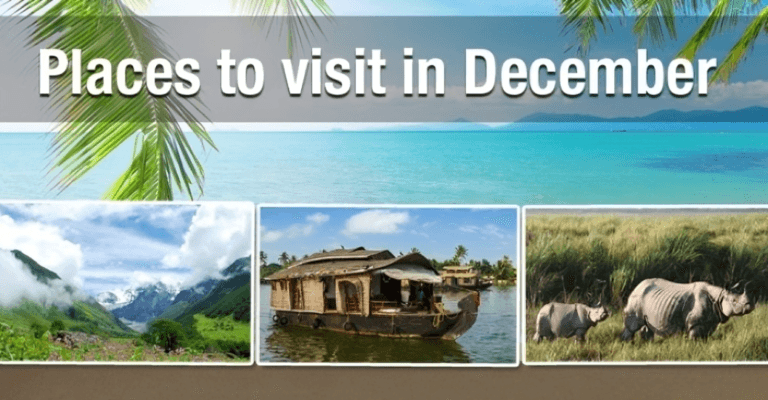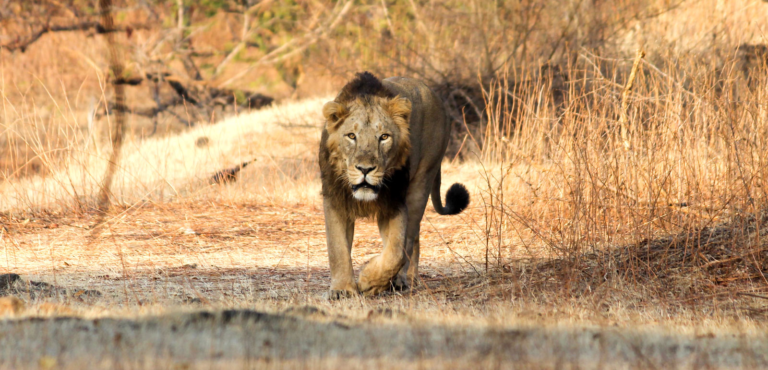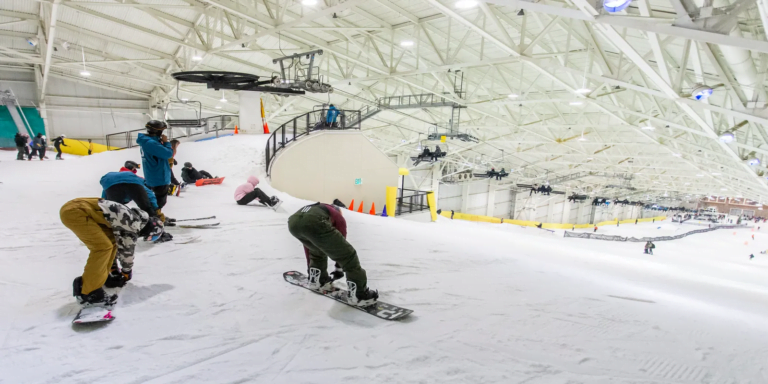Which Hawaiian Island Has Volcano Tours: Hawaii, an archipelago known for its breathtaking landscapes, vibrant culture, and unique geological features, is a top destination for travelers seeking adventure and natural beauty. Among the various attractions, volcano tours stand out as a must-experience activity, offering visitors the chance to witness the dynamic forces of nature firsthand. This article aims to explore which Hawaiian islands offer volcano tours, providing detailed information about the types of tours available, key attractions, cultural insights, and practical travel tips to ensure a memorable and safe experience.
Table of Contents
Geographical Information
General Geography of Hawaii
Hawaii consists of eight main islands: Hawaii (the Big Island), Maui, Oahu, Kauai, Molokai, Lanai, Niihau, and Kahoolawe. Each island has its own unique geographical features, ranging from lush rainforests and arid deserts to towering volcanic peaks and pristine beaches. The islands are located in the central Pacific Ocean, about 2,400 miles southwest of California, making them one of the most remote island chains in the world.
Climate and Best Times to Visit
Hawaii enjoys a tropical climate with two distinct seasons: the dry season (May to October) and the wet season (November to April). Temperatures are relatively consistent year-round, typically ranging from 70°F to 85°F (21°C to 29°C). The best time to visit for volcano tours is during the dry season when the weather is more predictable, and there is less chance of rain disrupting your plans.
Geographical Features of Each Island
- Hawaii (Big Island): The largest island, home to Mauna Loa and Kilauea, two of the world’s most active volcanoes.
- Maui: Known for Haleakalā, a dormant volcano that offers stunning sunrise views.
- Oahu: Features extinct volcanic craters like Diamond Head and Punchbowl.
- Kauai: Home to the Waimea Canyon and the Na Pali Coast, with ancient volcanic origins.
- Lanai and Molokai: Smaller islands with unique volcanic landscapes and cultural sites.
ALSO READ: How Much Money Do You Need to Travel for 6 Months in Asia
The Big Island (Hawaii Island)
Overview of the Big Island
The Big Island, officially known as Hawaii Island, is the largest and youngest of the Hawaiian Islands. It is renowned for its diverse ecosystems, ranging from sandy beaches to snow-capped mountains. The island is a hotbed of volcanic activity, making it a prime location for volcano tours.
Volcanoes on the Big Island
- Kilauea Volcano: One of the most active volcanoes in the world, Kilauea has been erupting continuously since 1983, offering visitors a chance to see flowing lava and steaming vents.
- Mauna Loa: The world’s largest shield volcano, Mauna Loa last erupted in 1984. It provides opportunities for hiking and stunning views from its summit.
Types of Volcano Tours Available
- Helicopter Tours: These tours offer an aerial perspective of the volcanic landscape, allowing visitors to see lava flows, craters, and the island’s rugged terrain.
- Guided Hikes: Hiking tours provide an up-close experience of the volcanic environment, with knowledgeable guides explaining the geological features and history.
- Lava Boat Tours: These tours navigate along the coast to view lava flowing into the ocean, creating spectacular steam plumes and new land formations.
Key Attractions and Activities
- Hawaii Volcanoes National Park: A UNESCO World Heritage Site, the park encompasses Kilauea and Mauna Loa, offering numerous trails, visitor centers, and educational exhibits.
- Thurston Lava Tube: A walk-through lava tube formed by past eruptions, providing a unique underground experience.
- Chain of Craters Road: A scenic drive through the park, showcasing various volcanic landscapes and craters.
Maui
Overview of Maui
Maui, known as the “Valley Isle,” is famous for its stunning beaches, lush valleys, and the towering Haleakalā volcano. The island’s diverse landscapes and vibrant culture make it a popular destination for travelers.
Haleakalā Volcano
Haleakalā, a dormant shield volcano, dominates the island’s southeastern region. Its summit, at 10,023 feet (3,055 meters), offers some of the most spectacular sunrise views in the world.
Types of Volcano Tours Available
- Sunrise Tours: These tours take visitors to the summit of Haleakalā to witness the sunrise above the clouds, a breathtaking and unforgettable experience.
- Bike Tours: Starting from the summit, visitors can bike down the volcano’s slopes, enjoying panoramic views and the thrill of a downhill ride.
- Hiking Tours: Various trails around Haleakalā offer opportunities to explore its unique flora and fauna, as well as the otherworldly landscape of the crater.
Key Attractions and Activities
- Haleakalā National Park: Encompassing the volcano, the park offers numerous trails, scenic drives, and educational programs about the area’s geology and ecology.
- Crater Rim Drive: A scenic route around the summit, providing multiple viewpoints and access to trailheads.
Oahu
Overview of Oahu
Oahu, the most populous of the Hawaiian Islands, is known for its vibrant city life in Honolulu, historic sites, and beautiful beaches. The island also features significant volcanic landmarks.
Historical Significance of Oahu’s Volcanic Activity
Oahu’s landscape was shaped by ancient volcanic activity, leaving behind notable features such as Diamond Head and Punchbowl Crater.
Types of Volcano Tours Available
- Diamond Head Crater Hike: A popular hike that takes visitors to the summit of this iconic crater, offering panoramic views of Honolulu and the Pacific Ocean.
- Punchbowl Crater: Home to the National Memorial Cemetery of the Pacific, this extinct volcanic crater offers historical insights and serene surroundings.
Key Attractions and Activities
- Diamond Head State Monument: A must-visit site for its historical significance and stunning views from the crater’s summit.
- Punchbowl National Cemetery: A solemn and beautiful place, offering insights into the island’s history and military significance.
Kauai
Overview of Kauai
Kauai, known as the “Garden Isle,” is famed for its lush landscapes, dramatic cliffs, and scenic canyons. The island’s ancient volcanic origins have created a diverse and picturesque environment.
Extinct Volcanoes and Geological Features
Kauai’s landscape includes extinct volcanoes and features like the Waimea Canyon and the Na Pali Coast, showcasing the island’s geological history.
Types of Volcano Tours Available
- Waimea Canyon Tours: Often referred to as the “Grand Canyon of the Pacific,” these tours provide breathtaking views of the canyon’s red and green cliffs.
- Na Pali Coast Helicopter Tours: Offering aerial views of the rugged coastline, these tours highlight the island’s dramatic volcanic origins.
Key Attractions and Activities
- Waimea Canyon State Park: A park offering hiking trails, lookout points, and educational exhibits about the canyon’s formation.
- Na Pali Coast State Park: Accessible by boat, helicopter, or hiking, this park features towering sea cliffs, lush valleys, and hidden beaches.
Lanai and Molokai
Overview of Lanai and Molokai
Lanai and Molokai, two of the smaller Hawaiian Islands, offer unique volcanic landscapes and rich cultural history. These islands are less developed than the others, providing a more intimate and tranquil experience.
Volcanic History and Geological Features
Both islands have distinct volcanic features, from the otherworldly landscape of Lanai’s Garden of the Gods to the dramatic sea cliffs of Molokai.
Types of Tours Available
- Cultural and Historical Tours: These tours explore the islands’ volcanic landscapes while delving into the rich cultural history and traditions of the local communities.
Key Attractions and Activities
- Garden of the Gods (Lanai): A unique geological area with rock formations and colorful landscapes, resembling a Martian terrain.
- Kalaupapa National Historical Park (Molokai): A historical site offering insights into the island’s past and stunning views of the sea cliffs.
ALSO READ: How To Travel In Goa With Family
Cultural Insights
Hawaiian Culture and Volcanic Legends
Volcanoes hold a special place in Hawaiian culture, deeply intertwined with local legends and beliefs.
Pele, the Goddess of Fire
Pele, the Hawaiian goddess of fire and volcanoes, is believed to reside in the crater of Kilauea. Her presence and stories are integral to Hawaiian mythology.
Importance of Volcanic Activity in Hawaiian Mythology
Volcanic activity is seen as a manifestation of Pele’s power, and many cultural practices and ceremonies are conducted to honor her and the land.
Safety and Health Precautions
General Safety Tips for Volcano Tours
- Always follow the guidelines and instructions provided by tour guides and park officials.
- Stay on marked trails and avoid restricted areas.
- Be prepared for changing weather conditions.
Health Precautions and Requirements
- Ensure you are in good health before embarking on strenuous activities like hiking.
- Carry enough water, wear sunscreen, and dress in layers to handle varying temperatures.
Environmental Considerations
- Respect the natural environment and cultural sites.
- Avoid disturbing wildlife and take all trash with you.
- Follow the Leave No Trace principles to minimize your impact.
Travel Tips
Best Times to Book Volcano Tours
- Book tours in advance, especially during peak travel seasons.
- Early morning or late afternoon tours often provide the best lighting for photography and cooler temperatures.
Accommodation Recommendations
- Choose accommodations close to the tour starting points for convenience.
- Consider staying in eco-friendly lodges or locally-owned hotels to support the community.
Transportation Tips
- Renting a car is often the best way to explore the islands at your own pace.
- Check for shuttle services or guided tour packages that include transportation.
Packing Essentials for Volcano Tours
- Comfortable hiking shoes, a hat, and sunglasses.
- A reusable water bottle, snacks, and a camera.
- A small backpack to carry essentials and any souvenirs.
Budget Planning
Cost of Different Types of Tours
- Helicopter tours: $200-$400 per person.
- Guided hikes: $50-$150 per person.
- Lava boat tours: $100-$200 per person.
Tips for Saving Money
- Look for package deals that combine multiple tours or include meals.
- Travel during the shoulder seasons (spring and fall) for lower prices and fewer crowds.
Budget-Friendly Accommodation and Transportation
- Consider staying in hostels, vacation rentals, or camping to save on accommodation costs.
- Use public transportation where available or carpool with other travelers.
Local Cuisine
Traditional Hawaiian Dishes
- Poi: A traditional Hawaiian staple made from taro root.
- Loco Moco: A comfort food dish consisting of rice, a hamburger patty, a fried egg, and gravy.
- Poke: Raw fish salad served as an appetizer or main course.
Must-Try Foods Near Volcanic Sites
- Fresh seafood, often caught the same day.
- Tropical fruits like pineapple, mango, and papaya.
- Hawaiian plate lunches featuring a variety of local flavors.
Recommended Restaurants
- The Rim Restaurant: Located at Volcano House in Hawaii Volcanoes National Park, offering stunning views and local cuisine.
- Cafe O’Lei at the Dunes: In Maui, known for its fresh seafood and Hawaiian specialties.
- Da Poke Shack: On the Big Island, famous for its poke bowls.
Expert Insights
Interviews with Tour Guides
Tour guides provide invaluable knowledge and stories, enhancing the volcano tour experience. They share insights about the geology, history, and cultural significance of the volcanic sites.
Quotes from Geologists
Geologists offer a scientific perspective on Hawaii’s volcanic activity, explaining the processes behind eruptions and the formation of volcanic landscapes.
Advice from Experienced Travelers
Seasoned travelers share tips on making the most of your volcano tours, from the best times to visit to essential gear and safety precautions.
Conclusion on (Which Hawaiian Island Has Volcano Tours)
Summary of Key Points
Hawaii’s volcano tours offer an unparalleled opportunity to witness the power of nature and explore the rich cultural and geological heritage of the islands. Whether you visit the active volcanoes on the Big Island, the stunning Haleakalā on Maui, the historical craters on Oahu, or the dramatic landscapes of Kauai, each island provides unique and unforgettable experiences.
Final Recommendations for Tourists
Plan your trip carefully, considering the best times to visit, the types of tours available, and the safety and health precautions. Embrace the local culture and cuisine, and be prepared for an adventure that will leave you with lasting memories.
Encouragement to Experience Hawaii’s Volcanic Beauty
Hawaii’s volcanic landscapes are a testament to the Earth’s dynamic forces and the islanders’ resilience and connection to nature. A volcano tour is not just a sightseeing activity but an immersive journey into the heart of Hawaii’s natural and cultural wonders. (Which Hawaiian Island Has Volcano Tours)
Learn more: Exploring Natural Remedies for Potency: A Comprehensive Guide





